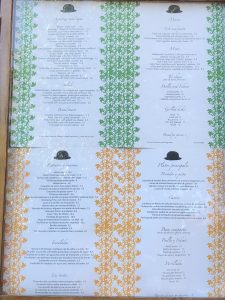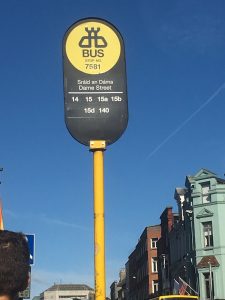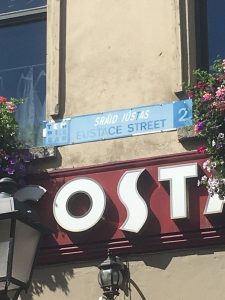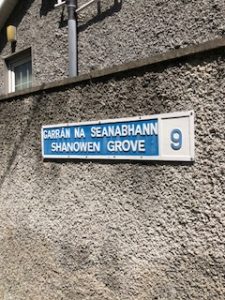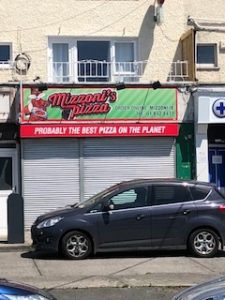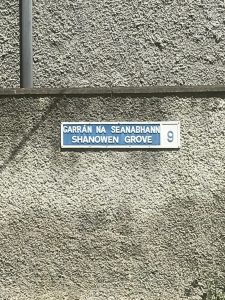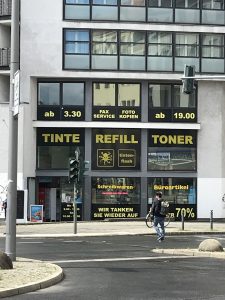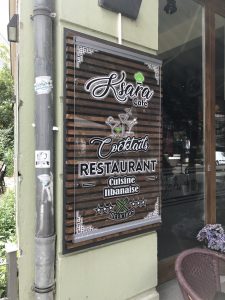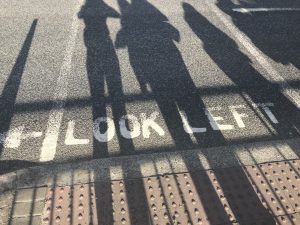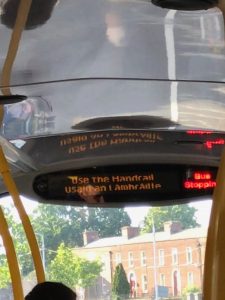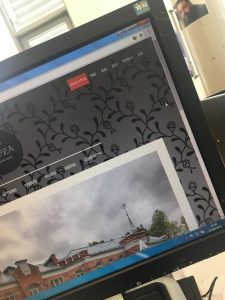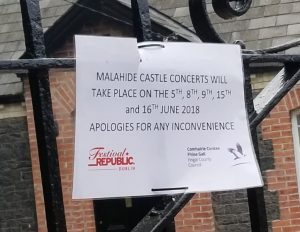Hong Kong has quickly become an international city; therefore, they utilize English as well as Cantonese as both their official languages. This makes navigating Hong Kong easy to the visiting tourist. As Leeman said, “Instances of written language in the landscape … are also productive signs: they have productive economic and social consequences…” (pg. 332) Although there are not many street signs that show the road name, because English is an official language of Hong Kong, all signs must be in English as well, as shown below:
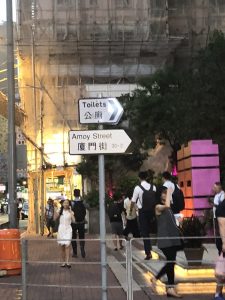
Many places have the name of their stores/restaurants in English, such as money exchange places, shown in example 2:
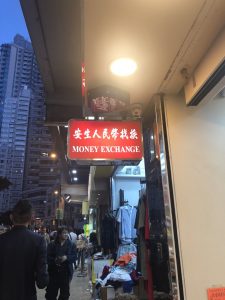
Yet some of the times, these places do not show up as English on navigating apps like Google maps. This creates more work for people to navigate or causes confusion, but still navigating Hong Kong has been easy because of such written languages that provide productivity for anyone visiting.
While at my internship, I hear some of my coworkers use a mix of English and Cantonese. They work with a lot of our clientele that are local and international as well, so it is important for them to understand and utilize both languages. However, my coworkers who work as graphic designers or warehouse management strictly only use Cantonese and have very little vocabulary or understanding of English to be able to communicate with me. This shows me to how while some people have held on strictly to their own culture and has not experienced much to need to learn English, the rest of the world has shaped Hong Kong where some people do need to use English to do business both locally and internationally as well.
On the streets of Hong Kong, I hear very little variety in usage of languages as I walk through. I mainly only hear other languages when used by tourists or people I suspect to not be native to Hong Kong or China. I hear strictly Cantonese spoken. What I found as interacting with people Hong Kong is that not many people speak English well as I thought they would.
In very developed areas, I would be able to find a lot of people that are able to use English well enough to communicate for directions. I suspect this is because these areas are more tourist heavy and therefore, having English as a skill is beneficial. While in places that are more underdeveloped, streets that have “mom-and-pop shops,” consist of less people who can converse in English. Yet just like in the reading where many non-Chinese-owned businesses would use Chinese in their name (p. 351), places here who are non-American-owned use English in their name that is generally next to their Chinese equivalent. Menus at restaurants are the same where they use a lot of English in the menu below their Chinese language, such as the restaurant I usually eat at for lunch below:
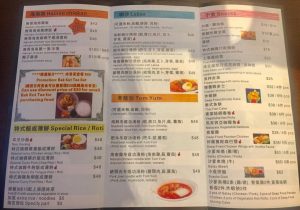
These places often make it easier on travelers, creating more business for them as compared to restaurants that do not have English on their menus (as shown below) and therefore, communicating on what to eat is a lot more difficult.

Although there are major differences in level of usage of English from place-to-place as you go, there is not a lot of difficulty in being able to quickly find your way around the city. There is an overwhelming number of tourists here and international people who come here for work. Though the colonization of Hong Kong by the British originally first brought English here, Hong Kong has risen to a major global city like New York and Los Angele. The impact of the businesses has affected the linguistic landscape, causing a need for the continued use of English in Hong Kong.

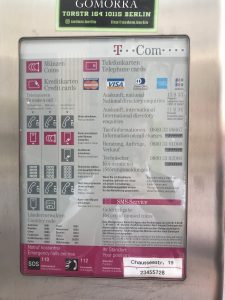
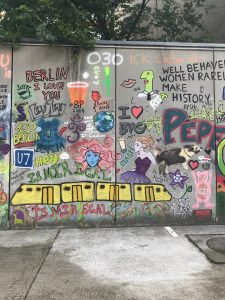
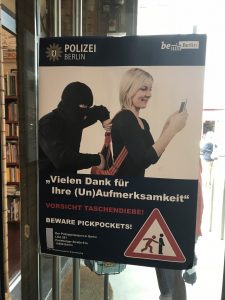
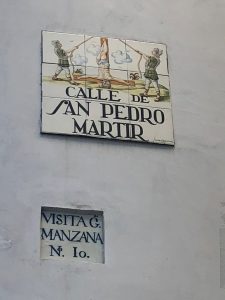
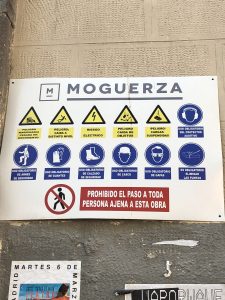
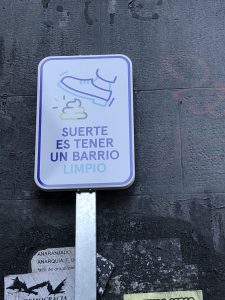
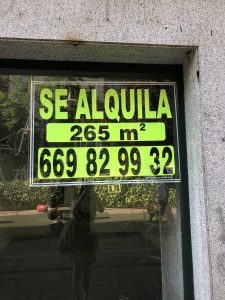 Example 4: “For Rent” Sign
Example 4: “For Rent” Sign